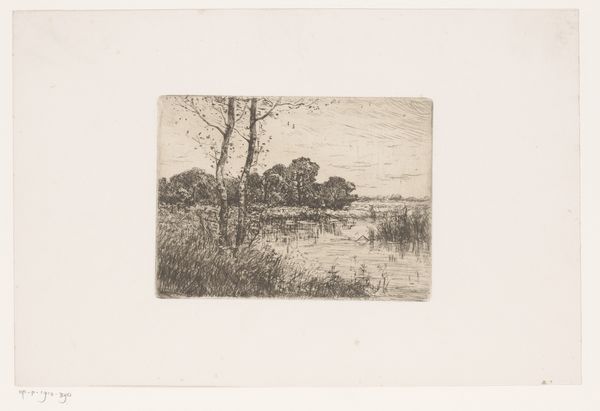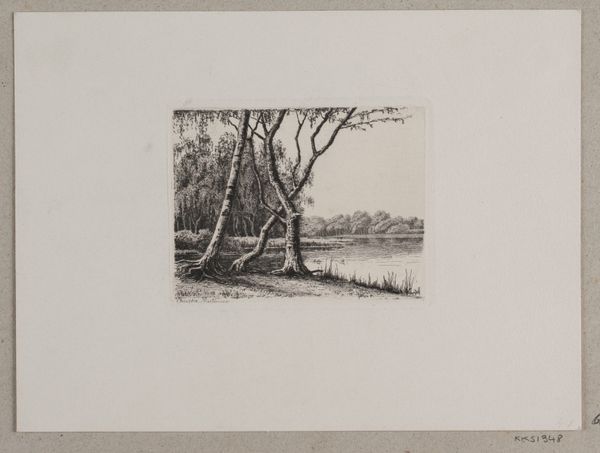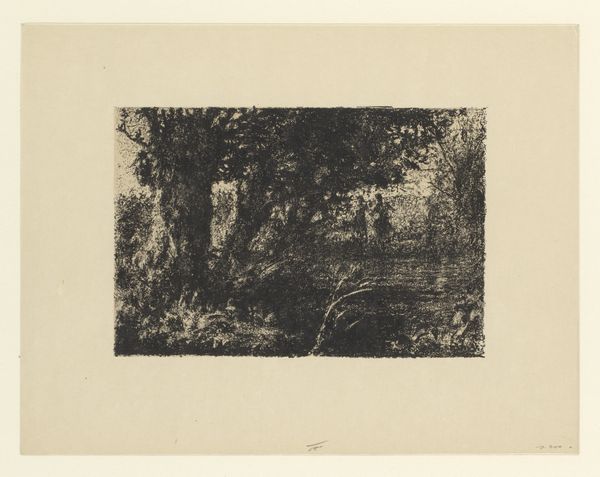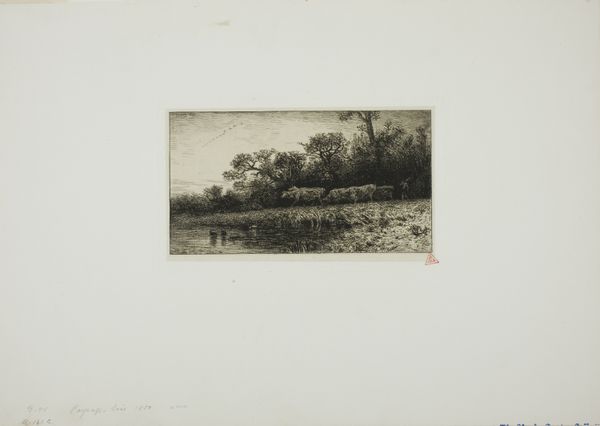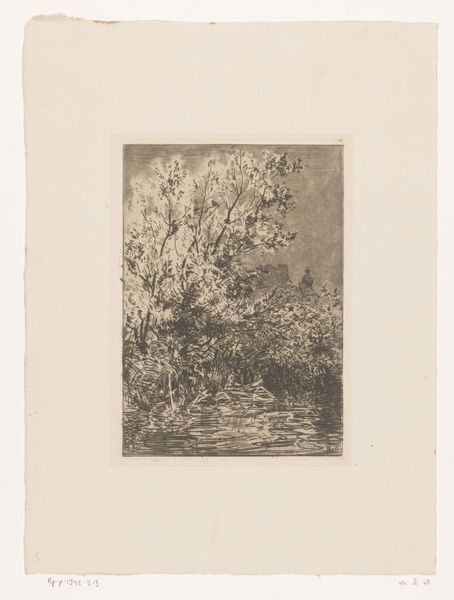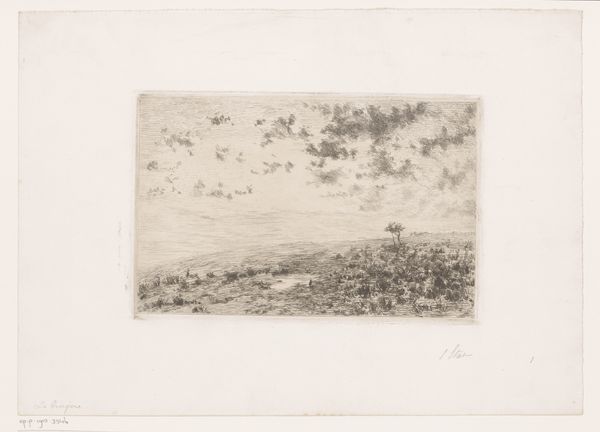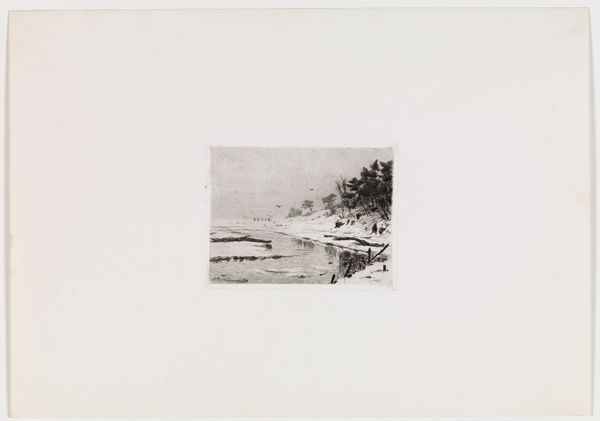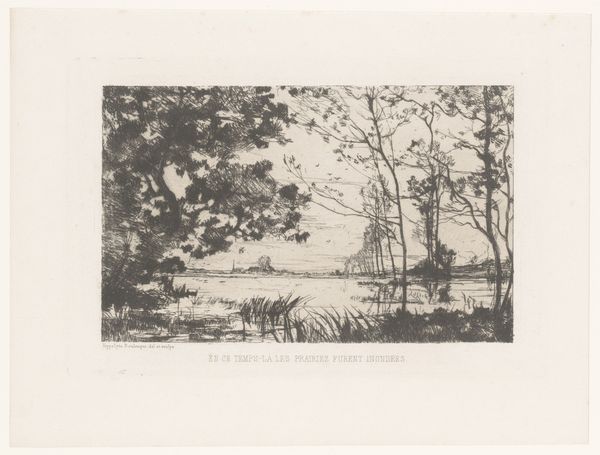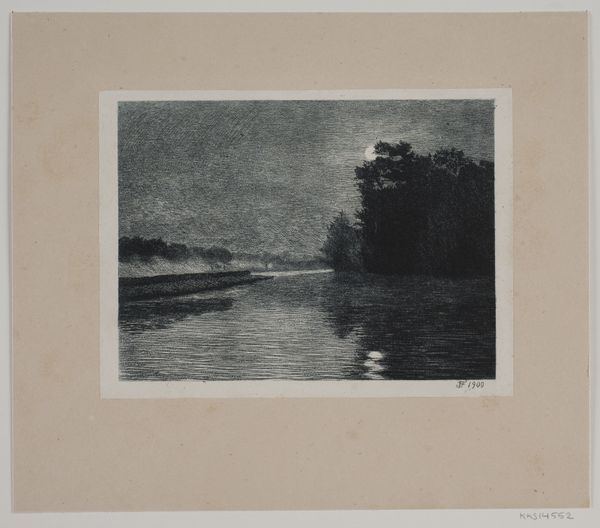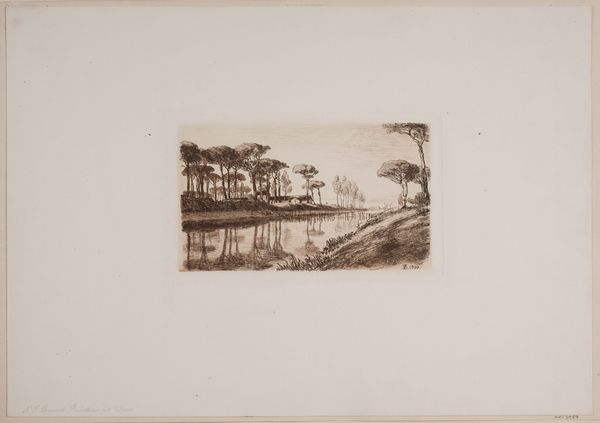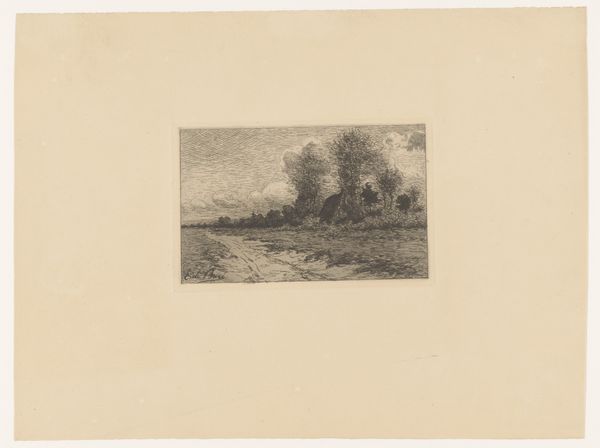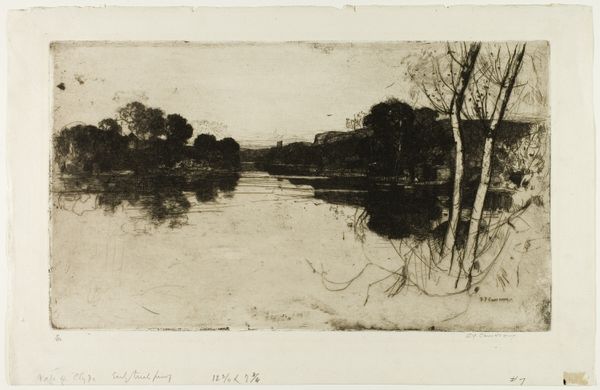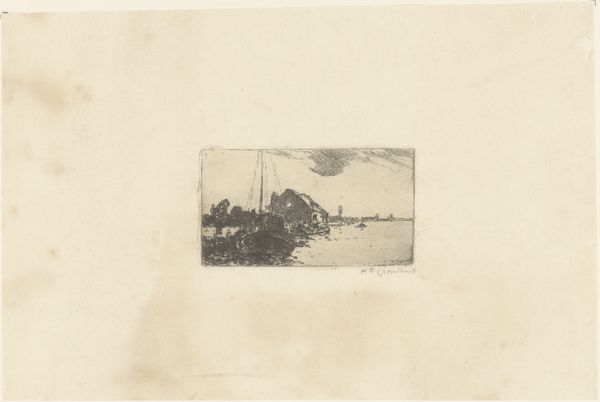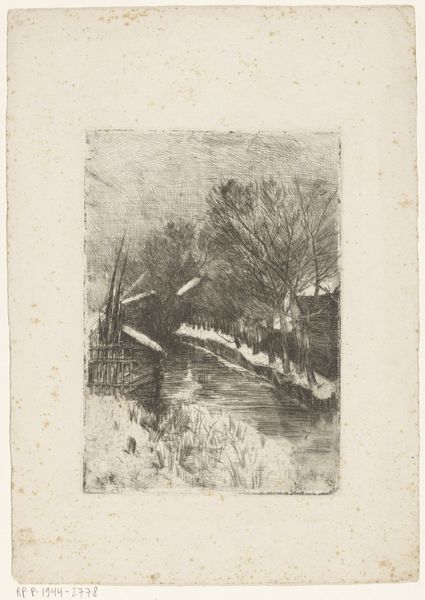
drawing, print, etching, paper
drawing
etching
landscape
paper
realism
Dimensions: 175 × 253 mm (image/plate); 315 × 446 mm (sheet)
Copyright: Public Domain
David Young Cameron created "The Clyde Near Carmyle" using etching, a printmaking technique that is both technical and deeply connected to the history of industrial production. In etching, a metal plate is coated with a waxy, acid-resistant substance called a ground. The artist then scratches through this ground with a needle, exposing the metal. When the plate is immersed in acid, the exposed lines are “bitten,” creating grooves. Ink is then applied to the plate, filling these grooves, and the surface is wiped clean. Finally, the plate is pressed onto paper, transferring the ink and creating the print. Cameron's choice of etching, with its reliance on industrial materials and processes, is particularly resonant given the subject matter: the River Clyde. The Clyde was the heart of Scotland’s shipbuilding industry, a symbol of both progress and the intense labor that fueled it. The print captures the scene's quiet beauty, yet the very technique used to create it reminds us of the broader social and economic context in which it was made. It challenges us to consider the labor and industry embedded in even the most serene landscapes.
Comments
No comments
Be the first to comment and join the conversation on the ultimate creative platform.
